Take the quiz: Coronavirus and misinformation
Question 1:
A viral Facebook post purporting to offer advice from a “friend’s uncle” was shared around 400,000 times.
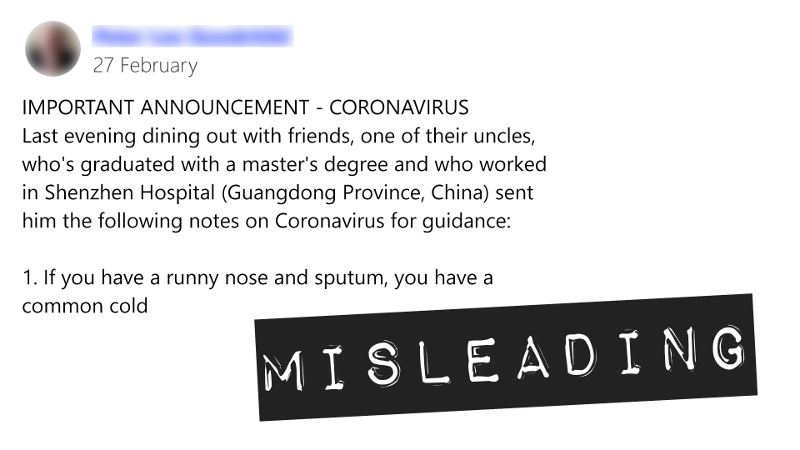
The advice is a mixture of accurate and inaccurate. But what about point #1?
“If you have a runny nose and sputum, you have a common cold,” not Covid-19.
False. Having a runny nose is a symptom of the common cold, but it isn’t exclusive to the common cold and it doesn't rule out Covid-19.
Handy tip: Be wary of information attributed to anonymous sources, like the "friend's uncle" in this post. When you don’t know who the source really is, it makes it a lot harder to verify if it’s true or false. It should also be a red flag—think twice before sharing it.
Question 2:
A popular Facebook post claimed that a PPE shipment was destroyed at the Port of Dover after illegal immigrants were found travelling alongside it. Is this true?
There is no evidence this took place.
Question 3:
Columnist Allison Pearson claimed on Twitter:
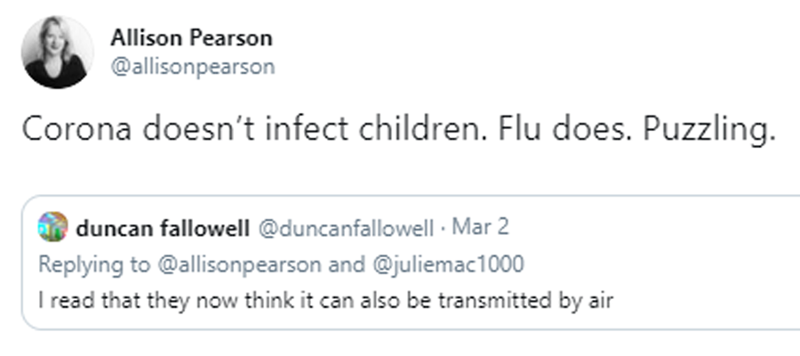
Is this true?
False. Children ARE NOT immune to Covid-19 and there have been thousands of cases of children being diagnosed with the disease. Children generally present with milder symptoms, but in some cases they can also be seriously affected, or pass the virus onto others who are more susceptible.
Handy tip: It’s always good to get more than one source for your information. If you’re not sure if a story you’ve seen is reliable, try searching to see what trusted news sites or fact checkers are saying.
Question 4:
A number of newspapers published these images, claiming they showed ‘alarming levels of SO2’ in Wuhan released from cremating bodies. This is false. But why?

The maps the claims are based on are not satellite images, and they do not show real, observed data on current levels of sulphur dioxide. NASA, which provided the data in the first place, told Full Fact that they are simply forecasts based on weather patterns and historical information about SO2 emissions.
Question 5:
Is this advice from a trusted source?
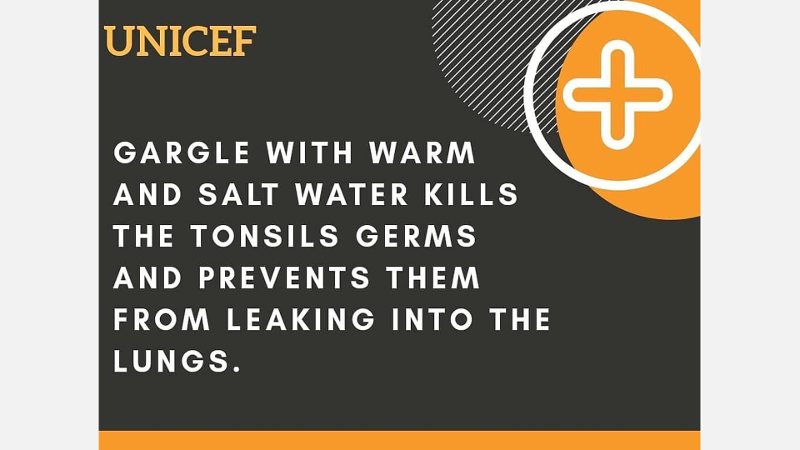
No. The images may say ‘Unicef’ but they are not made by or from Unicef.
Handy tip: If the information is said to come from a named source, try searching on their website or social media to check if they’ve actually said it. You can also look for clues like bad grammar in this instance. Phony URLs, awkward layouts and strange articles should also make you think twice.
Question 6:
This image was shared a number of times on social media. The image is fake. Why?
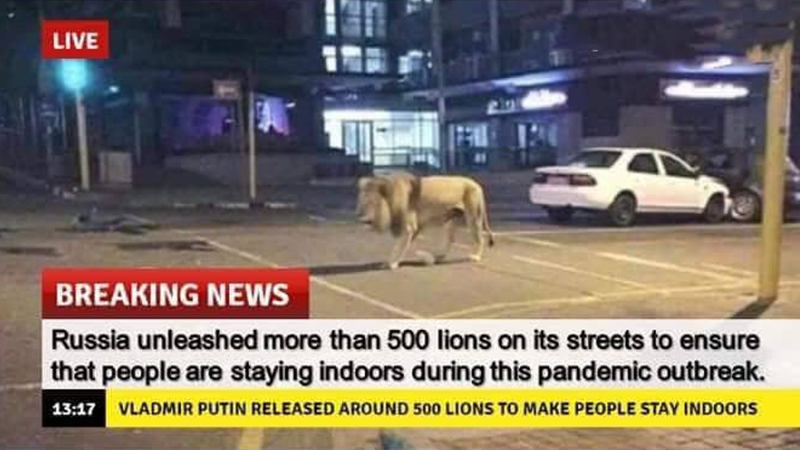
It is an old photo that was reportedly taken in South Africa and someone has pasted ‘breaking news’ graphics over the top.
Handy tip: To check images like this yourself, right-click the image and select 'Search Google for image.' Google will then show you previous instances where the photo has been shared.
Question 7:
This text message was sent to a number of people, linking to the website shown on the right. Is the text genuine?
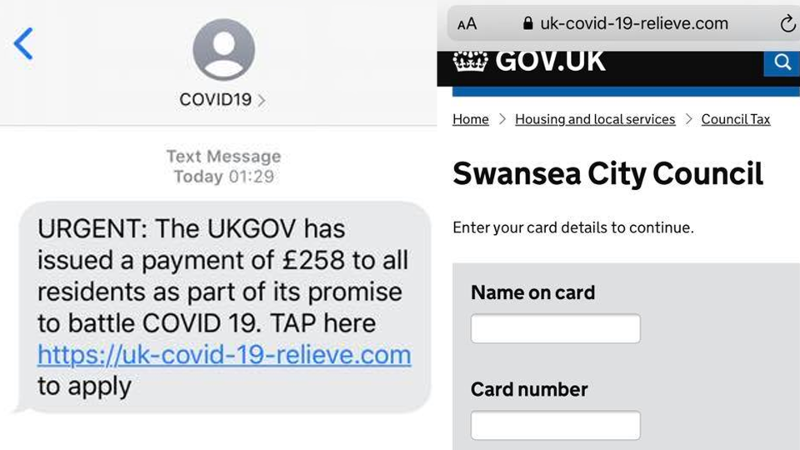
No. It's a phishing scam. There are a few clues to help spot this. "Relief" is misspelt as "relieve" and the link ends in .com, when the UK government’s website ends in gov.uk.
Question 8:
Social media posts claim that the government is tracking people's movements to make sure lockdown is being obeyed, threatening them with fines via text message. Is this true?
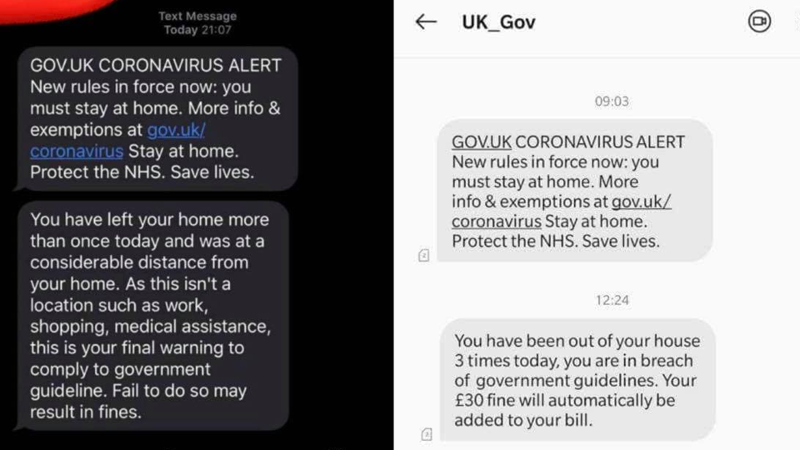
No. The top message is a genuine text that people across the country received from the government, but the bottom messages are forgeries.
Handy tip: Again, spelling and grammatical errors are a giveaway, as they’re unlikely to be present in official government communications.
Question 9:
This image claims that during lockdown Xbox and PlayStation online servers will be turned off during school hours so children can focus on school work. Is this true?

No.
Handy tip: There are a number of ways to check this yourself. The low resolution quality of the image and layout should be enough to make you think twice, but there are three sources mentioned: Sony (who own PlayStation), Microsoft (who own Xbox) and BBC News. If these were genuine then searching those names with a few keywords on Google is likely to show you the BBC article or the statements from the two companies explaining the move.
Question 10:
The Daily Star has reported on “a new conspiracy theory” surrounding Covid-19: that 5G networks could be responsible for the rapid spread of the virus. This is wrong. Why?
All of the above. 5G has nothing to do with the coronavirus. We can’t stress that enough.